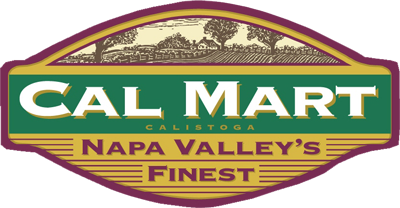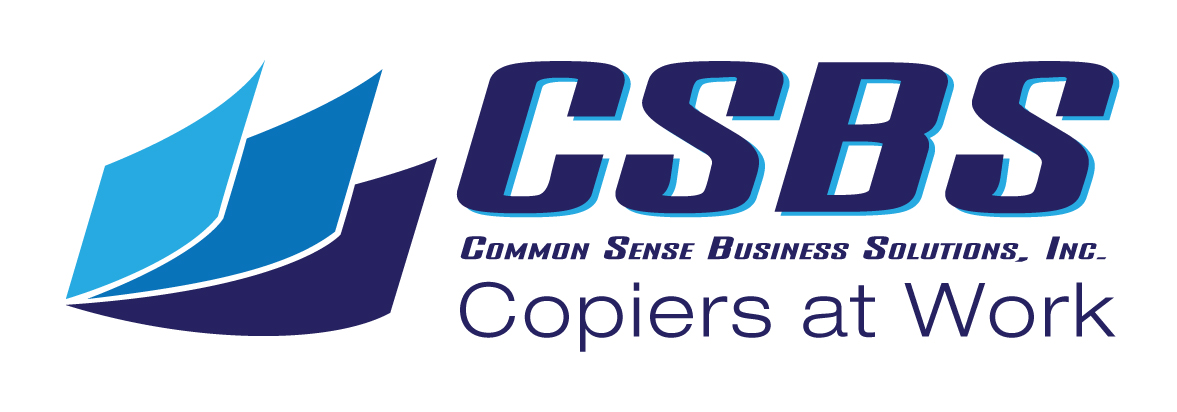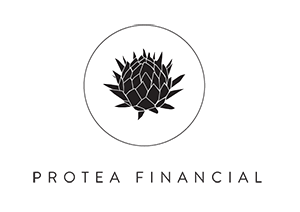Inbound Website Marketing Solutions
If you’re launching a brand new site or need a website redesign, the smart move is to think about methodologies from the start. Your site’s conversion rates, , and ultimately your bottom line will thank you.
This strategy focuses on attracting potential customers by providing them with valuable, informative . It’s a great way for businesses to grow their audience organically through blogging, , video, email and other channels.
are the future of online advertising. It is an online technique that focuses on attracting customers to a company’s , rather than relying on ads.
It is usually cheaper and more effective for generating for businesses with smaller budgets.
A good includes the following:
- Defining your
- Creating to attract your
- Building relationships with prospects and customers
- Optimizing your for (SEO)
Some great reasons to bring in professionals include:
- Your site isn’t converting as many as you want
- Your business has grown, but the site structure doesn’t show your new
- Your site lacks responsive , or is otherwise not accessible for many users
- have a difficult time navigating the site
- Your current is outdated or does not match your brand
There are many variations of strategies, but they all have one thing in common – they start with . There are two main types of : informational and promotional. Informational includes blog posts, videos, FAQs, etc., while promotional includes lead magnets like free ebooks or whitepapers.
for
The bare minimum for a successful site is to look good and offer a great . need to go a step further and implement strategic decisions directly into the .
There are plenty of sites out there that are pleasant to look at, the truly successful ones are graded by how well the site converts and into , and into new customers.
Before we start on your , we strategize and plan around the elements that make a great site:
- Spotlighting – campaigns stand on the strength of their efforts, so the needs to prominently feature your articles, blog posts, downloadable ebooks, videos, and more.
- Intuitive navigation – Dropdown menus, sidebars, and breadcrumb navigation are some of the best ways to provide an easy path for users to always find the information they need.
- Buying cycle – Different pieces of and calls to action should be placed strategically in different locations. Smart can tailor each page to the needs of the audience. Pages for casual can offer more information, while pages for who are ready to buy should push the closing pitch.
- Mobile-friendly – We recommend responsive to ensure a good first impression.
or Start from Scratch?
Rather than scrap your entire , there’s a good chance it can be saved. By cleaning up the navigation, modernizing the aesthetics, and optimizing it for , BrandVision can have it converting in no time! This option lets you build on top of the great features you already had.
However, starting over with a completely may also be the right choice to help integrate Hubspot tools, or switch to a different management system like WordPress.
Whether you need a or a thorough makeover, our team will start with vision and strategy before creating a beautiful and user-friendly site designed with in mind. has numerous effects on bounce and conversion rates, so it’s important that you consider these factors from the very beginning.
A Built for the
You already know everything about your . You don’t need someone to hold your hand and walk you through it.
Remember that your isn’t an expert. They don’t know where every link or what they’re even looking for in the first place. They need help.
Your should act as an invisible guide for your . It should seamlessly carry them to their desired and give just enough information to satisfy them before moving them to the next attraction. The best websites will keep this up until the is ready to make a purchase.
This means catering your to meet their needs and tailoring your messaging to any questions they might have. Put yourself in your ‘s shoes and take a walk around your site. Can you find the answers to common questions regarding your business? Do you see why you should buy from this business in particular?
Many businesses fail to ask themselves these questions and create their without considering their . They add blogs posts, they work on beautifying the branches without understanding that the tree itself is weak or unstable. Taking a deep look at or is a critical step to improving your experience.
Keep up a mindset of helping the rather than selling a product when designing your . This will maintain a conversational and trustworthy tone.
The best have a blog that provides high-quality to on a regular basis. They also have an effective SEO strategy and they use channels like Facebook, Twitter, LinkedIn and Instagram to reach out to potential customers.
Components of a User-Friendly
In 2018, Statista reported that 61 percent of people believed that the ease of search and navigation was the most important aspect of their shopping experience. If they couldn’t find what they were looking for within a few clicks, then there was a much higher chance of bouncing.
So, stop worrying so much about placing your graphics in pixel-perfect locations and hone in on how organically journey through your site. The goal of every page should be to naturally transition the visitor to the next until they make a purchase or find the they need.
Many factors play into this, and some are out of your control. However, there’s no shortage of things you can do to make your as friendly as possible.
The Necessity of Mobile and Browser Consistency
The majority of Google searches in the US are now performed on mobile devices. Naturally, this means that it’s become a necessity for all websites to be mobile optimized. There’s nothing more off-putting than visiting a site on your phone and only finding a jumbled mess.
If your site suffers from this, then you’re losing out on a massive chunk of business. This is even more of a death sentence if you rely on physical customers since most of them will be making local searches on their phones to find you.
Most building software has options to automatically convert assets to mobile, but it can be hit-or-miss with complex sites. If your site still has problems after this, then you’ll need to compromise on certain parts or find a professional developer to aid you.
Make sure to check how your site looks on a variety of browsers on both your personal computer and mobile devices. Depending on your formatting, your site may load differently on particular browsers. This will lower the and result in lost clients.
Make Your Accessible for All Users
You might think that differently-abled users only make up a small part of the population, but it’s estimated that over 7 million people in the US require alternative methods to engage with visual .
This group includes the blind, elderly, and those with severe dyslexia. Accommodating their experiences with screen reader software will paint your brand as one that appreciates and takes care of its . You must accommodate their experiences as well with screen reader accessibility.
Even if those capabilities are never used, you will have painted your brand as one that appreciates and takes care of its .
Properly Formatted
Most online is consumed through skimming rather than reading. This is because pages often contain a lot of information that isn’t immediately relevant to a visitor’s query. Why waste time reading for five minutes when you can skim through and find the answer in thirty seconds?
This is okay. It’s not insulting your or your business. After all, websites should be built for the consumer.
With this in mind, formatting should help the reader skim as quickly as possible. This is easy through properly named headings and subheadings. Some other great tools in aiding speed-skimmers are bullet points, lists, or separating key ideas into their own paragraphs.
Optimized Site Speed
Internet pioneers probably remember waiting forever for a single image to load. We did so because it was novel and amazing at the time.
However, the novelty has worn away. Waiting for a page for longer than a few seconds might as well be a slap in the face. An insult to our time. Google even released data stating that 53 percent of mobile users will bounce from sites that take longer than 3 seconds to load.
Imagine spending weeks optimizing your site’s interface and and losing business because you made someone wait for four seconds.
Additionally, websites with long loading times are deprioritized by Google’s search algorithm. So, it’s not even a problem of bouncing from your site. They can’t even find it in the first place!
Pleasing Consumers with Perfect Navigation
Like we said before, the majority of shoppers believe that search and navigation is the most deciding factor in their shopping experience. This means that shoppers can find anything they want without clicking through too many pages or getting lost due to confusingly named links.
Just the appearance of a cluttered menu bar can turn some away. A minimalistic menu bar works best in most cases. If you include a dropdown list for increased variety, then make sure to limit the options there as well. Most of your will be searching for specific and filling your menu with irrelevant items only hurts the .
Additionally, if you want great cross-browser compatibility, then your menus with JavaScript or simple HTML. This keeps your site from falling apart because you optimized your site for a specific browser.
Mixing in Video
People prefer to absorb in different ways. Some like to skim through thousands of words and learn as much as they can. Others just want to listen to a short video explaining a key concept.
The demand for video supplements for pages is growing. Over 70 percent of consumers would rather watch a video explaining a process than read the text version of it. However, creating enough videos to go with every piece of on a simply isn’t feasible for most businesses.
An economical solution to this is to only add visual media to a ‘s highest converting . This massively cuts down on extra production costs and still reaps most of the benefits. This strategy also helps your best stand out in the minds of your . On average, visual makes a viewer over 6 times more likely to recall a brand at a future time.
Premium Website Types
Blogs and videos only scratch the surface of great and . These mediums should be accompanied by the occasional piece of superior . Introducing this to a keeps it fresh for returning customers and boosts its credibility as an authority in a field.
Examples of this type of include:
- Online Courses
- Webinars
- eBooks
- Case Studies
understand that this type of premium is more time-consuming and costly to produce. However, they give of your site value that your competitors don’t have. It’s an offering distinct to your brand .
While standard is delivered to audiences for free; premium sometimes comes at a cost. This cost can be anything from supplying contact information to an actual transaction. Putting some sort of barrier to entry will only raise its value in the eyes of your audience.
Add Review and Comment Sections to Your Pages
According to Google, 55 percent of shoppers read at least four reviews before making a purchase. So, businesses should follow the old saying and let their customers “hear it from the horse’s mouth.”
Including unbiased comment and review sections into your product pages gives potential customers insight into your product’s quality. Even if you want to hide certain aspects, they’re still likely to look for reviews in other places where you have little to no control over the narrative. This also takes them away from your and disrupts the buying process.
Furthermore, these sections encourage engagement among your audience which brings two huge benefits to your business.
The first is additional . If a visitor happened upon your site without going through your funnels, then it’s unlikely they’ve discussed or read about your products with any previous customers. Having a space to do that integrated into your site greatly raises your credibility among this group.
The second is that active comment and review sections help boost SEO rankings . They are consistently adding to your site which informs Google’s algorithm that your site is bustling with activity. This is a key point Google uses in determining a page’s position on a SERP.
Real-time Conversations
When a visitor runs into a problem or has a question, they don’t want to wait days to get an emailed response. Consider yourself lucky if they think about talking to you at all. No, they want answers right away or they’ll turn their business over to one of your competitors.
These real-time conversations are particularly needed for complicated niches that the common person has little understanding of. Any technological field is a great example of this. Their support lines are always filled to the brim with people not understanding how to reset their devices.
Setting up an instant-support system requires a dedicated team to monitor the chat box at all times for requests. Although this is a considerable investment, it’s well worth it to maintain satisfaction.
However, if you don’t want to jump straight into the water, then there are beginner steps you can take.
- Set up a chatbot that refers queries to appropriate
- Develop an FAQ for
- Assign the task to one person and limit the queue
Best Tools?
It is a great way to market your products and services without being pushy or over the top.
There are many tools that can help you be more successful in your . is one of the most powerful tools. Read on to learn about one of the best tools for business marketers.
HubSpot: HubSpot is a great tool for companies to use. It can help you capture customers and grow your business. They also have an Academy where you can learn how to use these tools effectively for your business.
BroadVision isa Certified Hubspot Partner, and we can help you get set up and running with the HubspotMarketing platform. if you are looking for a , BroadVision is one of the best.
Partner with BroadVision for Your Needs
A strategic is non-negotiable for any . It guides your through their ‘s journey and builds brand loyalty. At least when it’s done right. BroadVision crafts an attractive and intuitive that makes your audience happy to do business with you.
If you’re ready to hire an or need more info about the process, contact BroadVision today. We’ll lead the way!
The Seven Principles for Attracting More Clients
This free white paper will help you build a solid foundation for all of your efforts:
Inbound Marketing
Inbound marketing methods can change the way you do business online.
Content Marketing
Content marketing can change your company's bottom line when done right.
Video Marketing
Video is an integral part of Inbound Marketing because of how it connects with your audience.
Social Media Marketing
One of the main pillars of a successful Inbound Marketing Strategy is a rich social media presence.
Search Engine Optimization
One of the most critical elements of Inbound Marketing is Search Engine Optimization or, SEO.
Inbound Website Design
Successful Inbound Marketing comes from connecting with your audience through a well-designed website.
Lead Generation
Businesses often struggle with lead generation, but marketing brings new leads to you.
PPC / Google Ads
Place custom ads where your audience is most likely to see and take advantage of them.
Marketing Automation
Nurture your leads until they become sales with the help of marketing automation.
Learn How Our Team Uses Data to Drive Your Inbound Marketing Strategy

Who We Are

Digital Marketers

Contact Us
Inbound Marketing Success Stories
What Our Customers Have to Say















